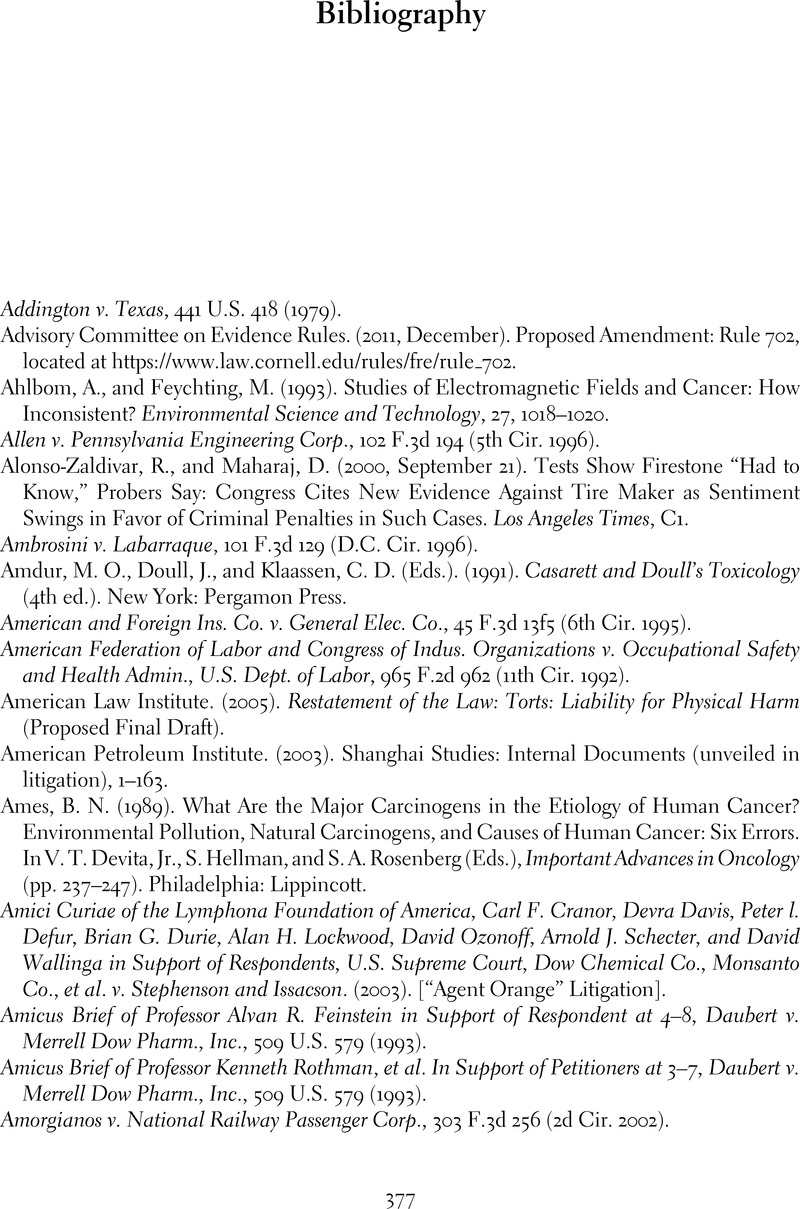Book contents
- Frontmatter
- Dedication
- Contents
- Preface
- Acknowledgments
- 1 The Veil of Science over Tort Law Policy
- 2 Legal Background
- 3 Institutional Concerns about the Supreme Court's Trilogy
- 4 Evidence of Toxicity
- 5 Scientific Reasoning and Some Applications
- 6 Excellent Evidence Makes Bad Law: Pragmatic Barriers to the Discovery of Harm and Fair Admissibility Decisions
- 7 Science and Law in Conflict
- 8 Milward v. Acuity Specialty Products: Toward Clarifying Legal and Scientific Issues
- 9 Enhancing the Possibility of Justice Under Daubert
- 10 What has Daubert Wrought?
- Bibliography
- Index
- References
Bibliography
Published online by Cambridge University Press: 05 May 2016
- Frontmatter
- Dedication
- Contents
- Preface
- Acknowledgments
- 1 The Veil of Science over Tort Law Policy
- 2 Legal Background
- 3 Institutional Concerns about the Supreme Court's Trilogy
- 4 Evidence of Toxicity
- 5 Scientific Reasoning and Some Applications
- 6 Excellent Evidence Makes Bad Law: Pragmatic Barriers to the Discovery of Harm and Fair Admissibility Decisions
- 7 Science and Law in Conflict
- 8 Milward v. Acuity Specialty Products: Toward Clarifying Legal and Scientific Issues
- 9 Enhancing the Possibility of Justice Under Daubert
- 10 What has Daubert Wrought?
- Bibliography
- Index
- References
Summary

- Type
- Chapter
- Information
- Toxic TortsScience, Law, and the Possibility of Justice, pp. 377 - 402Publisher: Cambridge University PressPrint publication year: 2016



